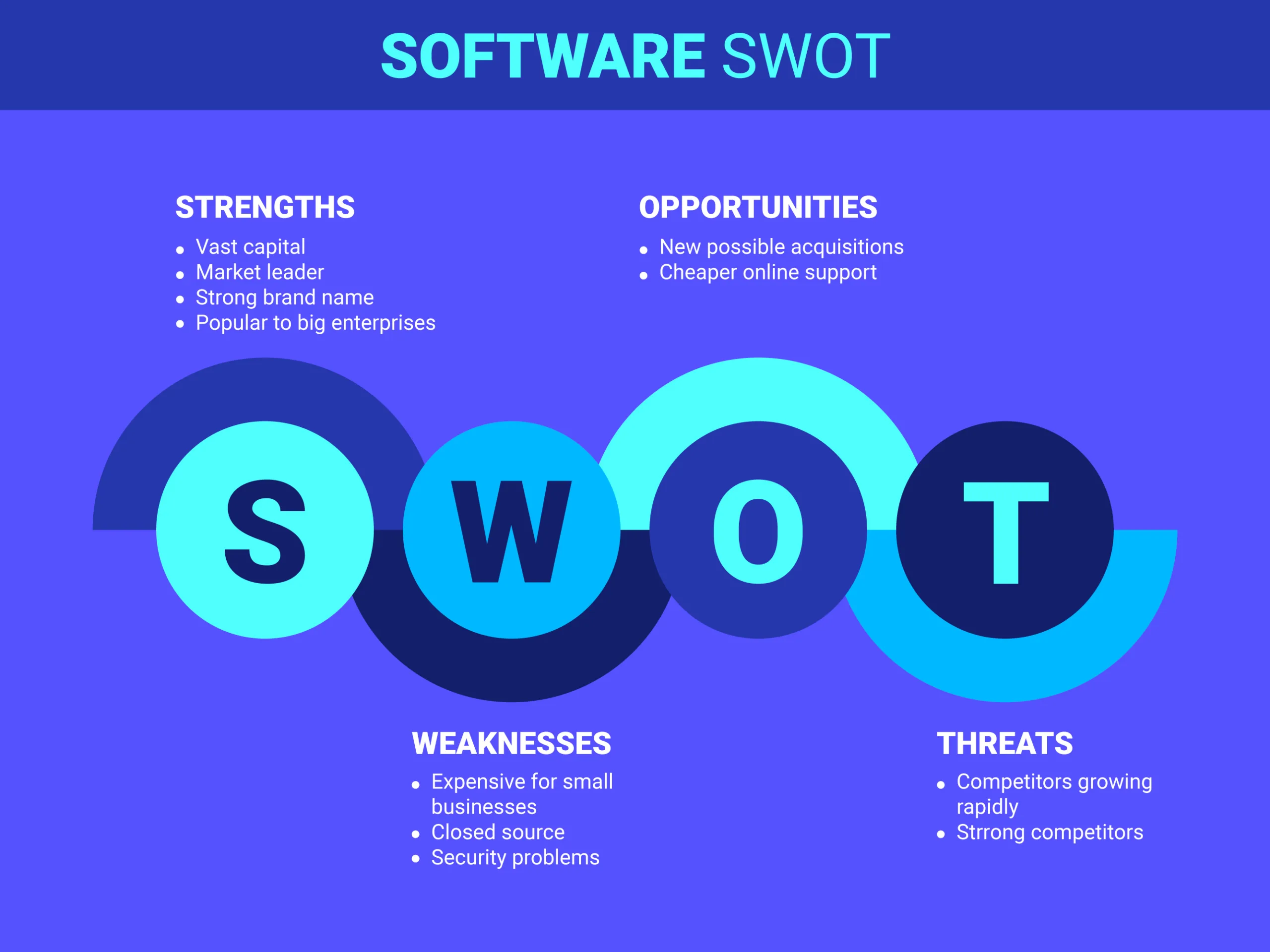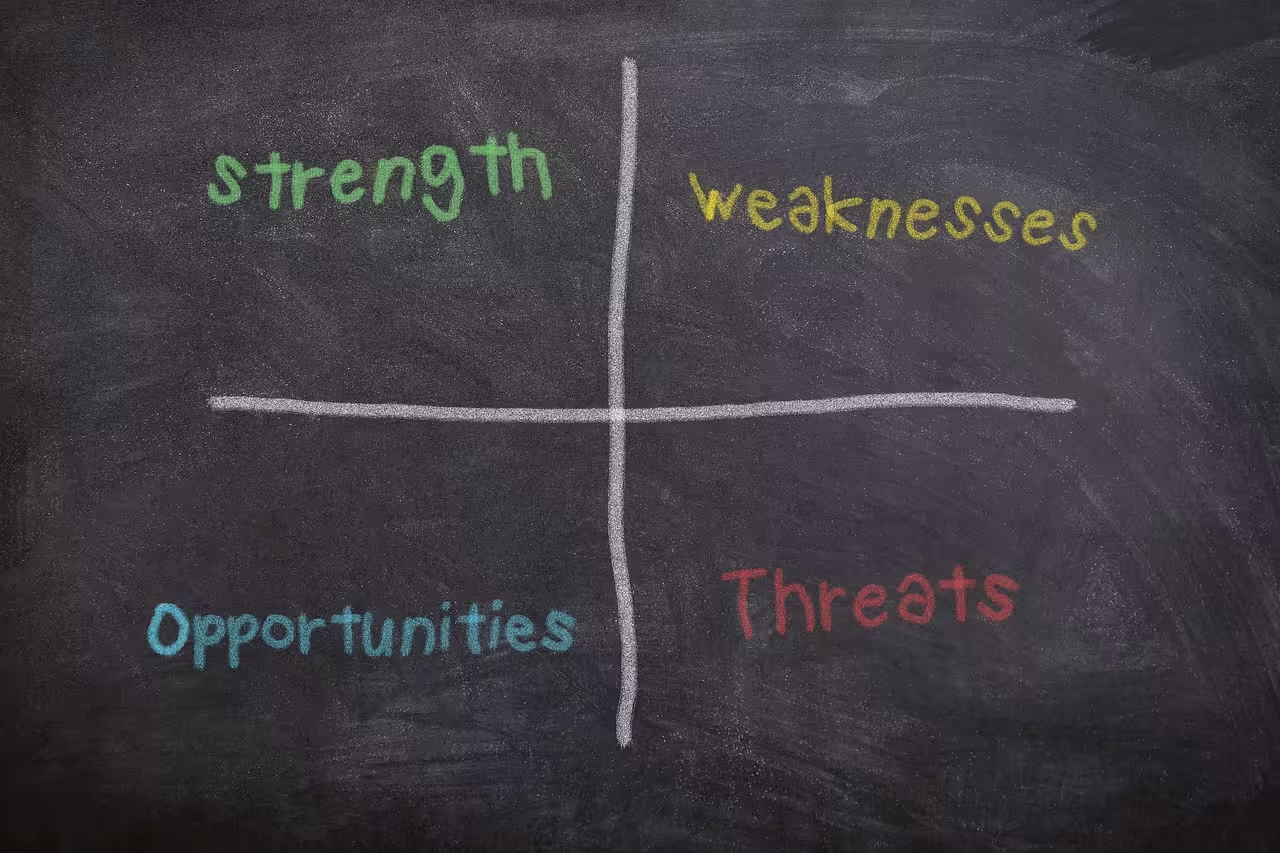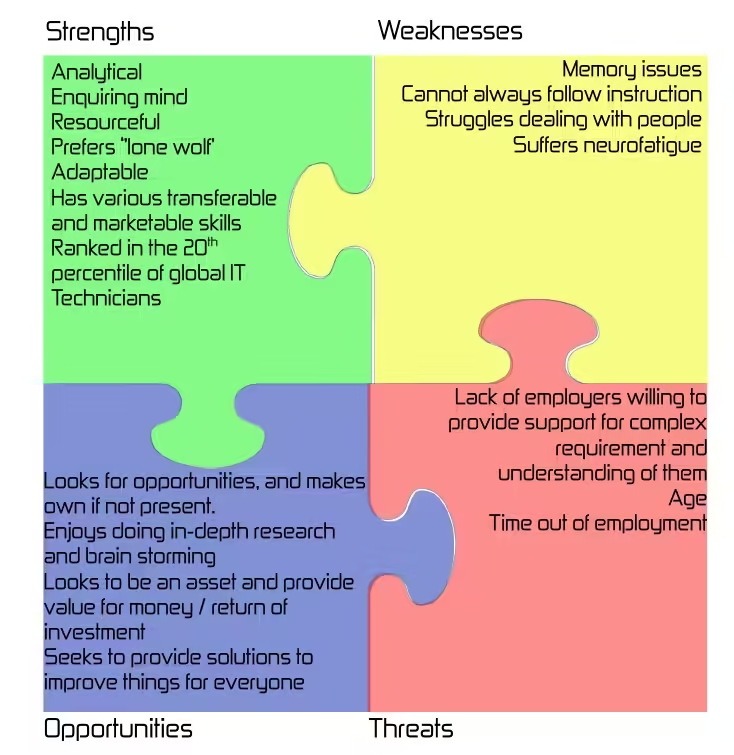
Personal SWOT Analysis
What is a Personal SWOT Analysis?
A personal SWOT analysis is a standard method used to evaluate one’s strengths and weaknesses. SWOT stands for strengths, weaknesses, opportunities, and threats. The purpose of a SWOT analysis is not just to list down these things, but to also expand upon them to improve your personal and career growth. Personal SWOT Analysis versus Business SWOT Analysis A personal SWOT analysis focuses on the individual, whereas a business SWOT analysis would focus on services or products of the business. Your SWOT analysis can be done, ideally before an interview, or during a job self-evaluation.
A personal SWOT analysis is a standard method used to evaluate one’s strengths and weaknesses. SWOT stands for strengths, weaknesses, opportunities, and threats.
The purpose of a SWOT analysis is not just to list down these things, but to also expand upon them to improve your personal and career growth.
Personal SWOT Analysis versus Business SWOT Analysis
A personal SWOT analysis focuses on the individual, whereas a business SWOT analysis would focus on services or products of the business.
Your SWOT analysis can be done, ideally before an interview, or during a job self-evaluation. A personal SWOT analysis can give you a better understanding of self, where you excel and what you want to achieve and areas for improvement.
Benefits of a Personal SWOT Analysis
As we often do in life, we evaluate what we are good at, and areas where we need to improve. However doing this at random points is not enough to fully develop insights and record your key points, as this can often be forgotten in between, or irrelevant points captured.
With a SWOT analysis, your self-evaluation is structured in a meaningful framework. It can help you identify and resolve problems in a manner that’s easy to digest and summarise.
For instance, if you only focus on your strengths and ignore your weaknesses, you will never be able to improve. When you write down your weaknesses and the threats you are facing using a SWOT structure, you are more likely to find solutions.
Writing Your SWOT Analysis
Setting about and finding out your strengths and weaknesses is not an easy task. Your own personal biases may come into play, making the process of conducting an accurate SWOT analysis even more difficult.
If, however you know how to successfully navigate each step of the process, then self-evaluation will become a lot easier.
Grab your Pen and Paper!
Before you begin your SWOT analysis, draw a box on blank paper and divide it into four squares. This will be a rough draft of your SWOT analysis.
Give each Square the following headings: Strengths, Weaknesses, Opportunities, Threats.

Strength Analysis
In order to figure out your strengths, focus on things that make you stand out head and shoulders above the rest from other people in your industry. For instance, if you are a marketeer, and you have a much sought after marketing degree – you can add it to your strengths. You can also add any awards, distinctions, and certifications you have in the same industry.
When figuring out your strengths, you don’t have to do everything on your own. Turn to someone you trust, and ask their opinion about your abilities. You can ask colleagues, friends and family members for a second opinion once you are done listing your strengths.

Examples of Personal Strengths
- I work well under pressure
- My analytical skills are great
- I am quick to learn technical concepts
- I like to stay organised in my personal and professional life
Weakness Analysis
Please be mindful that when you begin this section, it is to be used to learn what you can improve. Everyone has weak areas that need to be improved on. This SWOT analysis helps you understand your limitations and help you prepare and plan for personal growth.
One of the many benefits of a personal SWOT analysis is that it can just be for your own eyes only. One could consider it your own personal growth and change journal.
So, be as open as you want without the fear of judgement. Be honest with yourself and write down the weaknesses that you think are interfering with your growth.
Examples of Personal Weaknesses
- I am bad at budgeting which results in overspending.
- I shy away from learning technical skills and only focus on artistic skills.
- Brainstorming is easier for me than executing ideas.
- Impatience often occurs with me, which leads to me losing interest in projects halfway through.

Opportunity Analysis
Depending on the reason behind your SWOT analysis, this part can look different.
For instance, if you are doing a SWOT analysis for career growth, you can look at the opportunities around your workplace. For example, this could be any hobbies you can learn, such as archery. You should also consider the opportunities that you can create by working on your weaknesses, such as learning to code to build a website (as listed in the examples)
Sometimes, opportunities can also arise from your strengths. For instance, if you are good at graphic design, you can use your industry connections to find relevant jobs.

Examples of Opportunities
- I can get a promotion if I bring in more sales for three months straight.
- If I sign up for a free online course, I can learn how to build a website.
- I can benefit from my powerful industry connections.
- I can improve professionally by working on my technical skills.
Threat Analysis
Now, figuring out personal threats can be a bit tricky. If you think of yourself as a company or organisation, it will become easier for you to figure out what’s hindering your progress.
The threats you are facing can also vary depending on the situation you are in. Certain challenges can affect you in both your personal and professional life.
When thinking of threats, it is important to not only look at factors keeping you from moving forward, but also at the people and environment that amplify their effects.
For instance, if you fail to exercise money management when you are with your college friends, they may be considered a threat to your financial growth.
Threats can also be related to your weaknesses – i.e., if your competitors in the industry can exploit your weaknesses, they will turn into threats. It is important to not only work on your weaknesses but also to find a suitable way to handle situations making things worse for you.
Examples of Threats
- My project delivery turnaround is lesser than my colleagues and my boss will prefer them over me.
- New talent is introduced in the field & the competition is fierce.
- I am failing to keep up with the changing technologies in my field, and therefore I am technically not sound.

Wrapping Up
So putting together what you have learned, you can look to create your own SWOT, and who knows, you may also be surprised at what may hold you back, and what you have that is an asset that a prospective employer wants.

Example of a completed S.W.O.T analysis
This is an example of a completed (if basic) swot analysis
